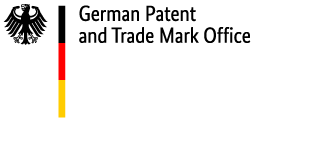Content
Design enforcement using a ballpoint pen as an example
Let us assume you have invented a ballpoint pen that has a special design. You produce this ballpoint pen in your company and sell it in Germany. You have obtained protection for the special design as a registered design at the DPMA. You have thereby secured an "exclusive right" which allows you to prohibit third parties from manufacturing, offering, etc. without your consent, writing instruments or other products with an identical or similar design. This means that your registered design enables you to take action against infringements - in other words, to enforce your rights and to do so in different ways.
Please note that the German Patent and Trade Mark Office is not allowed to provide legal advice. The enforcement of industrial property rights requires extensive legal knowledge. Therefore, in most cases, it is advisable to seek legal assistance from a lawyer.
- Lawyers with special knowledge in the field of IP protection (specialist lawyers for IP protection) in your region can be found via the chambers of lawyers.
- Patent attorneys can be found via a nationwide patent attorney search, a service of the Chamber of Patent Attorneys.
Case 1: If you notice that someone else has registered a design very much resembling your earlier registered design
Imagine that during the continuous monitoring of your design, it is discovered that a third party had a design registered that is identical or similar to your earlier registered design.
In this case, you can file an application, at the DPMA, for the determination or declaration of invalidity (![]() Sec. 33 Design Act) of the design that has been applied for later. The application for the determination or declaration of invalidity is subject to a fee and must be filed in writing including a statement of grounds.
Sec. 33 Design Act) of the design that has been applied for later. The application for the determination or declaration of invalidity is subject to a fee and must be filed in writing including a statement of grounds.
Case 2: If you notice that someone else is using your design without your permission
The registered design is an effective instrument for combating counterfeiters. If you discover that a third party is using your design without authorisation, you can demand, for example, removal of the impairment, cessation and desistance (![]() Sec. 42(1) Design Act) or also the destruction or release of the products (
Sec. 42(1) Design Act) or also the destruction or release of the products (![]() Sec. 43 Design Act). Under certain conditions you may also claim compensation (
Sec. 43 Design Act). Under certain conditions you may also claim compensation (![]() Sec. 42(2) Design Act).
Sec. 42(2) Design Act).
Please note, however, that the DPMA does not examine the requirements of novelty and individual character during the registration procedure. You can only obtain legally valid protection if these requirements are met.
1. How does this work in detail? (Conduct before a lawsuit, civil proceedings, criminal proceedings)
What to consider with regard to a possible lawsuit:
- Conduct before a lawsuit
As holder of the right, you can first try to solve the problem in an amicable way by contacting the infringer directly. If no amicable solution can be reached, you can also assert your claims in court.
- Civil proceedings: design litigation
The regional courts have jurisdiction in civil proceedings for design infringement (![]() Sec. 52(1) Design Act). You must appoint a lawyer to represent you before the regional courts.
Sec. 52(1) Design Act). You must appoint a lawyer to represent you before the regional courts.
- Criminal proceedings
In addition, deliberate IP infringement is in principle punishable by law, but as a rule is only prosecuted upon request (![]() Sec. 51 Design Act).
Sec. 51 Design Act).
- Injunction
Court proceedings may often be time-consuming. Where there is a need for urgency, an injunction offers provisional legal protection.
Important: If an injunction proves to be unjustified from the outset, the opponent can claim compensation from the person filing the request for injunction.
2. How does this work at a trade fair?
At trade fairs in particular, it often occurs that designs are apparently infringed by competitors. For this reason, you should make special preparations for trade fairs by keeping available all the design documents you need to obtain an injunction (Secs. 935 et seqq. of the German Code of Civil Procedure [Zivilprozessordnung]) and try to document the design infringement for possible legal disputes.
3. How can I prevent copied or counterfeit products from entering the European market? ()
In addition to civil and criminal proceedings, there is also the option of border seizure pursuant to Section 55 of the Design Act, in order to prevent copied or counterfeit products from entering the European market or being exported from that market into third countries.
Important: If a seizure proves to be unjustified from the outset, you may have to compensate the damage caused by the unjustified seizure.
Case 3: If your design right is challenged by a third party
Even before filing a design application, you should make sure that no similar or identical design was registered for another proprietor, because the DPMA does not examine novelty and individual character of your design applied for during the design registration procedure. If your design is identical or similar to an existing registered design, the proprietor of the earlier design having priority could file an application for the determination or declaration of invalidity of your design. In that case your design might even have to be cancelled.
If you wish to take preventive action, you can commission a commercial search or visit a patent information centre in your proximity. Free information on designs registered at the DPMA is available to you in the Design Register.
Last updated: 7 January 2025

Social Media